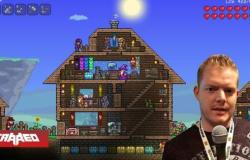Our Solar system could be attracted by the gravity of a white dwarf starcrushed and turned into dust, as scientists from the University of Warwick recently announced.
Astrophysicists of the University of Warwick and other institutions have contributed to elucidating what happens to planetary systems, such as our solar system, when their host stars, such as the Sun in our case, become white dwarfs.
(You may be interested in: Why does the sun stay on if there is no oxygen in space? This is NASA’s response)
In the study, which was published in the journal Monthly Notices of the Royal Astronomical Society (MNRAS)researchers studied the fate of asteroids, moons and planets that pass near white dwarfs, analyzing transits, which are decreases in the brightness of stars caused by objects passing in front of them.
Dr Amornrat Aungwerojwit of Naresuan University, who led the study, said: “Previous research has shown that when asteroids, moons and planets approach white dwarfs, the enormous gravity of these stars tears these small planetary bodies into smaller and smaller pieces“.
Collisions between these pieces end up crushing them into dust, which eventually falls into the white dwarf, allowing researchers to determine what type of material the original planetary bodies were made of.
Debris clumps from a disintegrated planetesimal are irregularly spaced in a long, eccentric orbit around the white dwarf. Individual clouds of debris pass intermittently in front of the white dwarf, blocking some of its light. Due to the different sizes of the fragments of these clusters, the brightness of the white dwarf flickers chaotically.
Photo:Dr Mark Garlick/The University of Warwick
Professor Boris Gaensicke, from the Department of Physics at the University of Warwick, commented: “The simple fact that we can detect remnants of asteroids, moons or even planets buzzing around a white dwarf every couple of hours is mind-boggling, but our study shows that the behavior of these systems can evolve rapidly, in a matter of a few years.”
“Although we think we are on the right track in our studies, the fate of these systems is much more complex than we ever imagined.”
The first white dwarf (ZTF J0328-1219) studied seemed stable and “behaved well” in recent yearsbut the authors found evidence of a major catastrophic event around 2010.
He Massachusetts Institute of Technology (MIT) had shown in 2015 that the third white dwarf analyzed (WD 1145+017) behaved in accordance with theoretical predictions, with large variations in the number, shape and depth of transits. Surprisingly, in this latest study, the transits have completely disappeared.
“The system is, overall, getting brighter, as dust produced by the catastrophic collisions of 2015 disperses,” Professor Gaensicke said. “The unpredictable nature of these transits can drive astronomers crazy: one minute they’re there, the next they’re gone. And this points to the chaotic environment they’re in.”
“For the rest of the solar system, some of the asteroids between Mars and Jupiter, and perhaps some of Jupiter’s moons, could break off and travel close enough to the eventual white dwarf to undergo the shredding process we have investigated.” .
SCIENCE EDITING*
*With information from the University of Warwick






